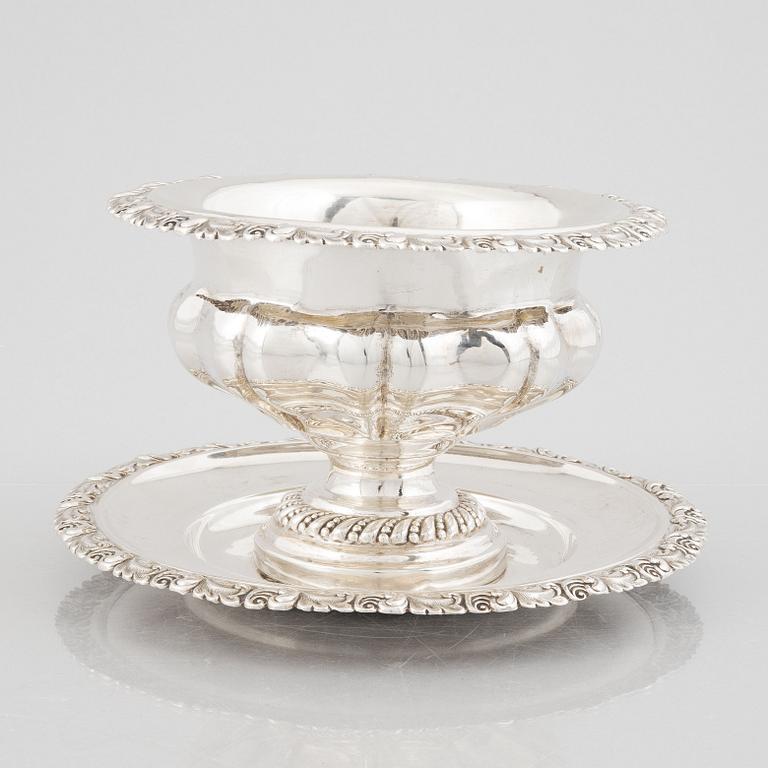Empire
A Swedish Late Empire Silver Sauce Bowl, mark of Carl Nyström, Stockholm, probably 1846.
Round bowl with a recessed foot, on a detachable plate. Rim decoration of stylised leaves in relief. Both parts with silver marks. Indistinct year mark, probably 1846. Diameter of the plate 20.5 cm, diameter of the bowl 17.5 cm, height together 12 cm. Total weight 464 grams.
Minor wear, a few minor marks/dents. Engraved number on the underside of the plate.
Designer
The Empire style lasted roughly between 1810 and 1840 and is primarily considered an interior design style. The style is characterised splendor and pomp and is sometime known as imperial. The French empire is often associated with Napoleon Bonaparte of France who was highly interested in ancient Rome and its attributes. Egyptian elements with sphinxes, palmettes, eagles, griffins, and masks were common as decorative elements. The most common wood was mahogny and burnished gilding was popular. Chiffonier were popular furniture items during the empire and seated durnitres were dressed in light, bright colours. The 1830-40s is known as the Late Empire and was more bourgeois. In Germany and Austria, the style was known as biedermeier and was identified by furniture with softer lined made out of birch. The Empire style came to Sweden with Jean Baptiste Bernadotte (King Karl XIV Johan) afterwhich was known as "Karl Johan". The Swedish style was lighter and less majestic.
Read more











































